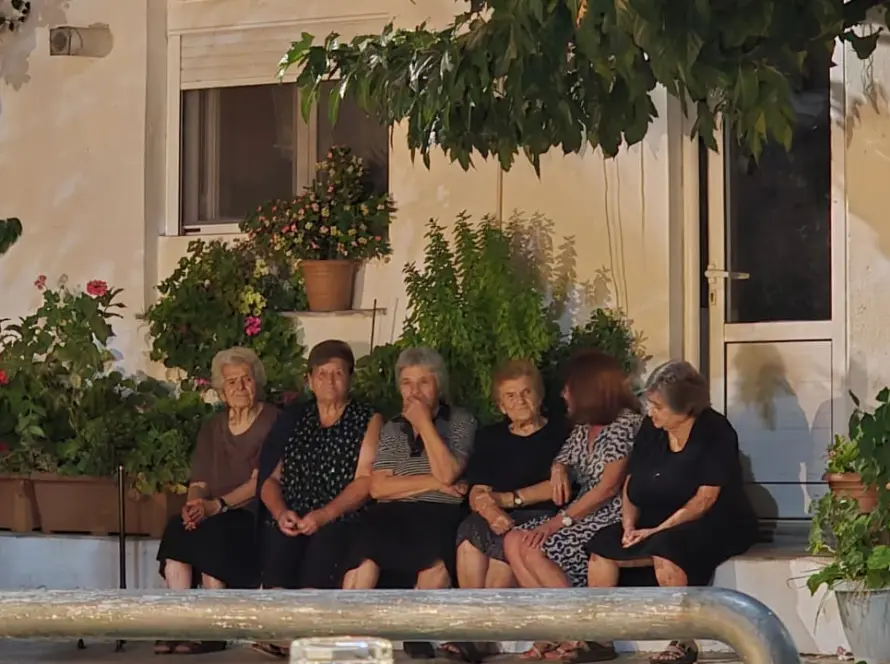The Palace of Knossos, nestled just 5 km south of Heraklion, is a stunning emblem of the Minoan civilization and the fabled home of King Minos. Constructed around 2000 BC on Kephala Hill, it served as the vibrant center of a bustling city that thrived for nearly two thousand years, witnessing the rise and fall of one of Europe’s earliest advanced societies.
An Architectural Marvel
Spanning 20,000 square meters, the palace boasted multi-storey structures complete with intricate light wells, polythyra (rooms with multiple doors), sophisticated drainage systems, and walls that came alive with colorful frescoes and painted plaster. The Central Court was a hub for public gatherings, while the West Court was reserved for ceremonial events. Notable spaces included the Throne Room, the Hall of the Double Axes, and the Queen’s Hall. The Royal Road connected the palace to the North Entrance, which led to the ancient harbor.


Myths and Legends
Rich in mythology, the palace is linked to the tales of the Labyrinth and the Minotaur, as well as the poignant story of Daidalos and Ikaros. These legendary narratives, intertwined with archaeological marvels, transform Knossos into a realm where history and myth beautifully converge.


1. Daidalos and Ikaros: The Price of Ambition
The Myth:
Daidalos was a master craftsman and inventor, renowned throughout Greece for his ingenious creations. After helping Queen Pasiphae (Minos’ wife) construct a wooden cow to satisfy her unnatural passion (leading to the birth of the Minotaur), King Minos imprisoned Daidalos and his son Ikaros in a tower to prevent them from revealing the secret of the Labyrinth.
To escape, Daidalos fashioned wings from feathers and wax. He warned Ikaros not to fly too high, as the sun would melt the wax. Ignoring his father’s advice, Ikaros soared too close to the sun, causing the wax to melt and plunging him to his death into the Icarian Sea.
Symbolism:
- Hubris and Consequence: Ikaros’ death serves as a warning against overreaching ambition.
- Freedom and Creativity: Daidalos represents human ingenuity and the desire for freedom.
- Father-Son Relationship: The myth poignantly captures the conflict between guidance and youthful recklessness.
- Natural Laws: The tragic end highlights the limits of human achievement when pitted against nature.

2. The Labyrinth and the Minotaur: The Tyranny of Power
The Myth:
The myth begins with King Minos praying for a divine sign to secure his rule over Crete. Poseidon sent a magnificent white bull from the sea, which Minos was supposed to sacrifice. Instead, he kept it, angering the god. As punishment, Poseidon made Pasiphae fall in love with the bull, resulting in the birth of the Minotaur—a monstrous creature with the body of a man and the head of a bull.
To contain the beast, Minos ordered Daidalos to construct the Labyrinth, a vast, complex maze where the Minotaur was kept. To appease Minos after the death of his son Androgeus in Athens, the Athenians had to send seven young men and seven young women every nine years to be sacrificed to the Minotaur.
The hero Theseus volunteered to end this cruel cycle. With the help of Minos’ daughter, Ariadne, who gave him a ball of thread to mark his path, Theseus killed the Minotaur and found his way out.
Symbolism:
Love and Betrayal: Ariadne’s assistance and subsequent abandonment by Theseus show the fleeting nature of alliances.Lorem ipsum dolor sit amet, consectetur adipisicing elit, sed do eiusmod tempor incididunt ut labore et dolore magna aliqua. Ut enim ad minim veniam, quis nostrud exercitation ullamco laboris nisi ut aliquip ex ea commodo consequat. Duis aute irure dolor in reprehenderit. Lorem ipsum dolor sit amet, consectetur adipiscing elit.
The Labyrinth: Represents confusion, entrapment, and the complexity of human choices.
The Minotaur: Embodies the monstrous consequence of unchecked desire and betrayal of the divine.
Heroism: Theseus symbolizes courage and intelligence, using both brute strength and strategic thinking to overcome the beast.
Rise, Fall, and Rediscovery
Originally built in 2000 BC, the palace suffered destruction from an earthquake around 1700 BC and was rebuilt even grander. It was partially destroyed again in 1450 BC during the Thera volcanic eruption, and ultimately fell around 1350 BC. The ruins were buried until rediscovered in 1878 by Minos Kalokerinos, with major excavations led by Sir Arthur Evans from 1900 onwards.



